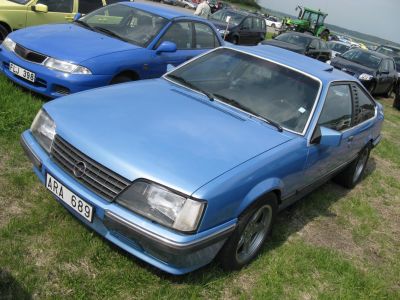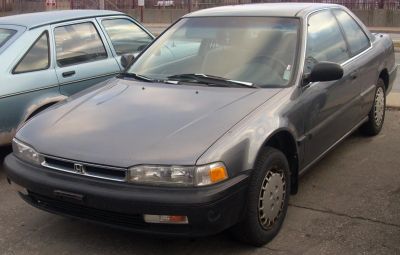 1968 BMW E9 Dimensions, Size & Specs
1968 BMW E9 Dimensions, Size & SpecsMeasurements of the 1968 BMW E9, engineered for optimal performance and comfort
| Dimensions | |
|---|---|
| Length: | 4660 mm183.5 in15.3 ft |
| Width: | 1670 mm65.7 in5.5 ft |
| Height: | 1370 mm53.9 in4.5 ft |
| Trunk Capacity: | 450 liter15.9 cu ft |
| Weight Specifications | |
| Curb Weight: | 1400-1420 kg3086-3131 lbs |
| Maximal permitted Weight: | 1790 kg3946 lbs |
| Roof Load: | 75 kg165 lbs |
| Tire Specifications | |
| Rims Size: | 14-inch rims:
|
| Tire Size: |
|
The BMW E9 generation, produced between 1971 and 1975, is a distinguished classic coupe renowned for its elegant design and balanced proportions. With an overall length of 4660 mm (183.5 inches), a width of 1670 mm (65.7 inches), and standing at a height of 1370 mm (53.9 inches), the E9 offers a sleek, aerodynamic silhouette typical of late 1960s and early 1970s grand touring cars. Weighing between 1400 to 1420 kilograms (3086 to 3128 pounds) in curb weight, this model balances agility and stability, while its maximum permissible weight reaches up to 1790 kg (3946 lbs).
The coupe is capable of accommodating a reasonable luggage capacity of 450 liters (15.9 cubic feet), making it practical for longer trips despite its sporty profile. It supports a roof load limit of up to 75 kilograms (165 pounds), which is convenient for additional storage options such as roof boxes or carriers. The E9 rides on 14-inch rims sized 6J x 14, paired with classic 195/75 R14 tires that emphasize both the vintage aesthetic and compliance with period-specific performance standards.
Overall, the BMW E9 stands out as an iconic model in BMW's history, blending performance, style, and usability in a compact yet spacious coupe format. It remains a cherished collector's item and a noteworthy example in the evolution of luxury sports coupes, offering a unique size and weight profile that contrasts with modern vehicles while underscoring classic automotive engineering excellence.
Discover the standout features that make the 1968 BMW E9 a leader in its class
Have a question? Please check our knowledgebase first.
The BMW E9 coupe measures 4660 mm (183.5 inches) in length, 1670 mm (65.7 inches) in width, and 1370 mm (53.9 inches) in height. These dimensions contribute to its classic grand touring proportions, offering a sleek and sporty silhouette characteristic of that era. Its relatively narrow width compared to modern vehicles and low height enhance its aerodynamic profile and overall driving dynamics.
The BMW E9 weighs between 1400 and 1420 kilograms (approximately 3086 to 3130 pounds) in curb weight, which refers to the weight of the car including standard equipment and a full tank of fuel, but no passengers or cargo. The maximum permissible weight is 1790 kilograms (3946 pounds), which accounts for the vehicle fully loaded with passengers and luggage. This weight range allowed the E9 to maintain impressive agility and handling for its time, contributing to its reputation as a sporty and dynamic coupe. The moderate weight balanced power-to-weight ratio helps ensure responsive acceleration and cornering.
The BMW E9 offers a luggage capacity of 450 liters (about 15.9 cubic feet), which is quite generous for a coupe from the early 1970s. This spacious trunk makes the E9 suitable for longer trips, providing adequate space to store suitcases, travel bags, and other gear. Coupled with its coupe design, the trunk space emphasizes the grand touring nature of the vehicle, allowing for comfortable storage without compromising the stylish proportions of the car.
Yes, the BMW E9 fits comfortably into a standard garage. Given its length of 4660 mm (183.5 inches), width of 1670 mm (65.7 inches), and height of 1370 mm (53.9 inches), it is smaller than most modern family sedans and SUVs, which typically exceed 1.8 meters in width. A standard garage, which is typically around 2.4 to 3 meters wide and 5 to 6 meters deep, can easily accommodate the E9, providing enough clearance on all sides for doors to open and for maneuvering.
The BMW E9 succeeded the BMW New Class coupes, and it marked a clear evolution in size and style. The E9 is longer, wider, and lower than its predecessors, with dimensions of 4660 mm (183.5 inches) in length, 1670 mm (65.7 inches) in width, and 1370 mm (53.9 inches) in height. These increased dimensions contributed to a more elegant and aggressive grand touring presence. The enhanced size also allowed for better interior comfort and luggage capacity, elevating the driving experience compared to earlier BMW coupes which were more compact and less luxurious.
The BMW E9 is equipped with 6J x 14 rims paired with 195/75 R14 tires. The 14-inch wheel size with relatively tall 75-profile tires provides a balance between ride comfort and handling sharpness. This combination was typical for grand tourers of the 1970s, offering good grip and stability while maintaining cushioning on road imperfections. The moderately wide 195 mm tire width contributes to improved traction without compromising the classic look and maintaining the car's agility and driving precision.
With a height of 1370 mm (53.9 inches), the BMW E9 is relatively low-slung, enhancing its sporty and aerodynamic profile. The roof load capacity is rated at 75 kg (165 lbs), which allows for attaching roof racks or carrying additional cargo such as luggage boxes or sports equipment. This roof load capacity adds some versatility to the E9, enabling owners to increase storage options for long trips or outdoor activities without sacrificing safety or structural integrity of the coupe's roof.
Compared to the Mercedes-Benz C107 SL, introduced around the same period, the BMW E9 is slightly longer and lower but narrower. The E9’s length at 4660 mm (183.5 in) is marginally longer than the C107's approximate 4630 mm (182.3 in). The E9 weighs between 1400 and 1420 kg (3086–3130 lbs), which is comparable to the C107’s weight range. Overall, the E9 presents a more compact and agile footprint but with a slightly larger luggage capacity, emphasizing its grand touring credentials compared to the sportier SL.
The BMW E9 was produced from 1971 to 1975, during which it established itself as a highly successful grand touring coupe. This era marked a pivotal point for BMW as the E9 combined refined styling, powerful inline-six engines, and excellent handling, cementing BMW’s reputation for sporty luxury cars. The limited production period adds to the E9's collectible status today, while its impact on BMW's lineage is notable for influencing the design and performance standards of subsequent coupe models.
Considering the BMW E9's dimensions, particularly its width of 1670 mm (65.7 inches) and height of 1370 mm (53.9 inches), the coupe offers reasonable interior space for two adults with a focus on driving experience over spaciousness. While shoulder and headroom may feel slightly more confined compared to modern vehicles, the E9’s cabin was designed to balance comfort and sportiness typical of its time. The generous luggage capacity and ergonomic cockpit further add to its usability on long drives, although it lacks some of the spaciousness and modern creature comforts found in contemporary cars.
Discover similar sized cars.

| Production: | 1983-1986 |
|---|---|
| Model Year: | 1983 |
| Length: | 4720 mm185.8 in |
| Width: | 1722 mm67.8 in |
| Height: | 1380 mm54.3 in |

| Production: | 1990-1993 |
|---|---|
| Model Year: | 1990 |
| Length: | 4685 mm184.4 in |
| Width: | 1695 mm66.7 in |
| Height: | 1375 mm54.1 in |
